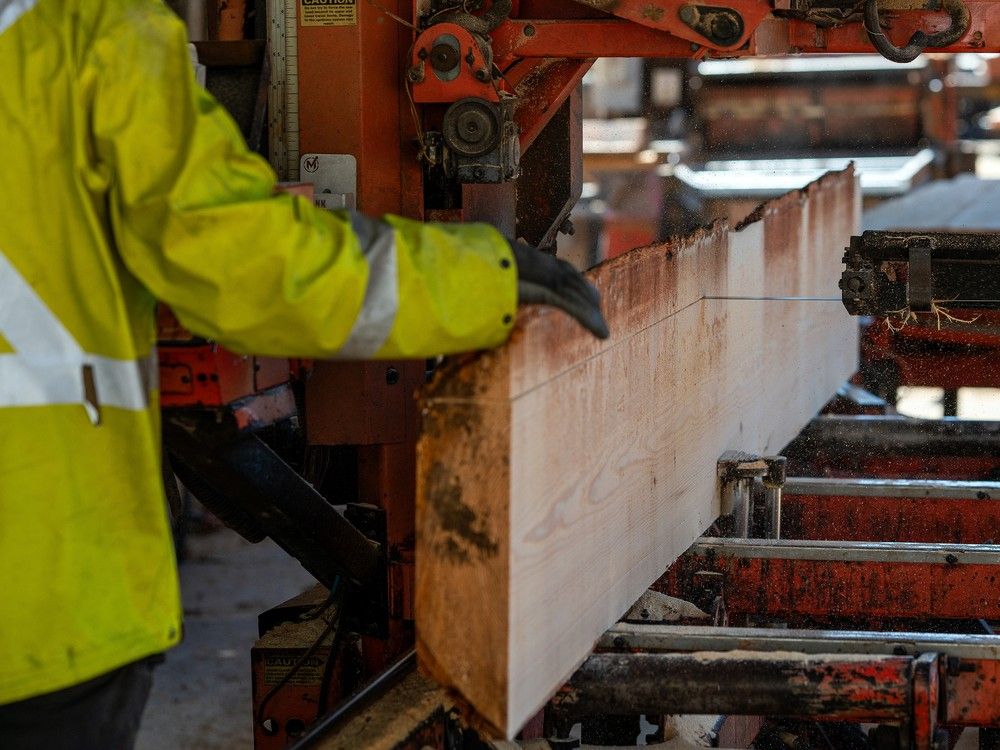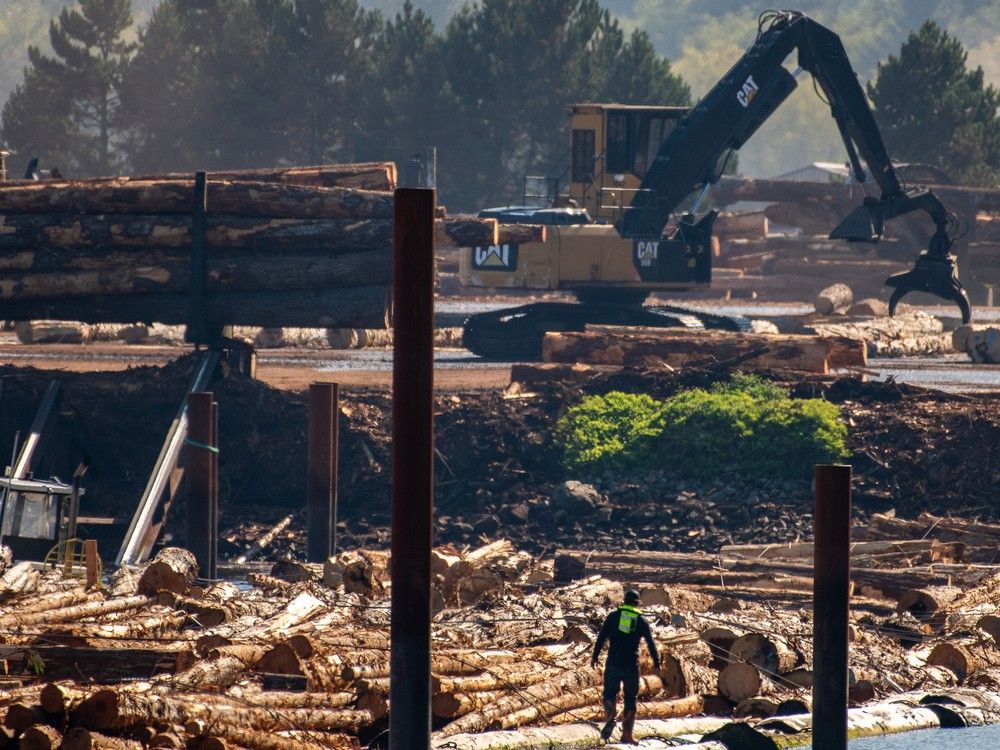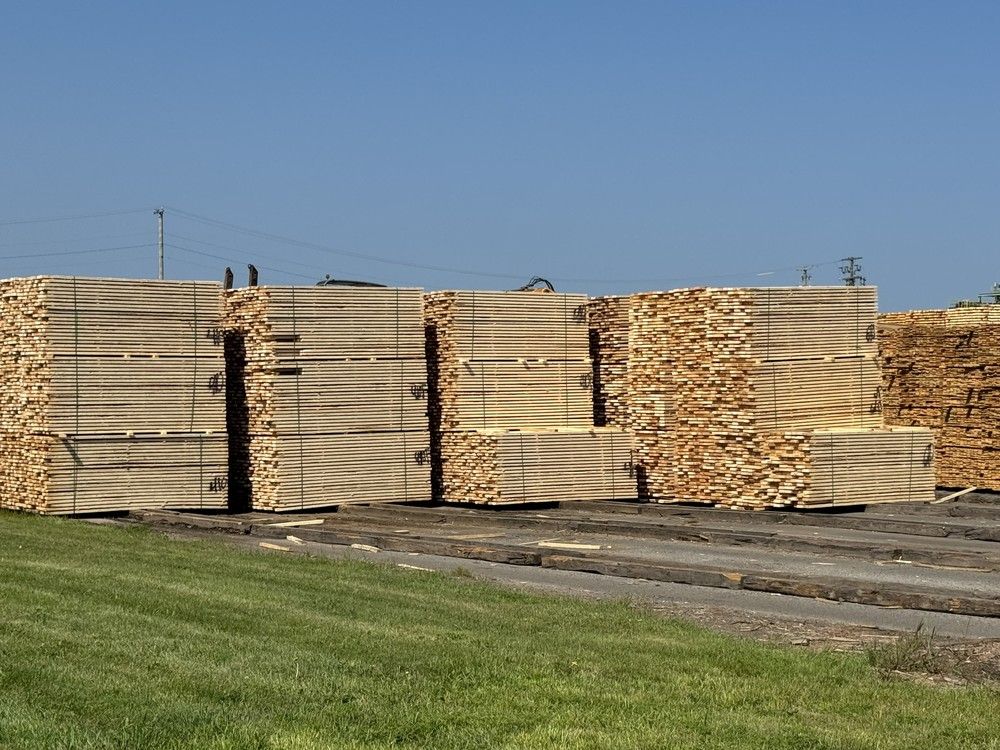
WASHINGTON, D.C. — The Canada-U.S. softwood lumber trade relationship has dealt with ups and downs, disputes and resolutions, for decades. Anxiety for Canadian exporters is reaching a fever pitch again as the U.S. threatens to more than double softwood lumber duties and add even steeper tariffs under a national security investigation.
Canadian foresters, mills, and governments that enjoy taxes, economic spinoffs and stumpage fees from Crown land will feel the pain if they lose too much access to the massive U.S. market. But larger producers have been preparing for just this kind of contingency and have cleverly hedged their bets, building capacity in the U.S., where they can sell as much as they want to Americans, tariff-free.
Canadian firms will soon receive word from the U.S. Commerce Department’s Sixth Administrative Review (AR6) of U.S. countervailing and anti-dumping duties on Canadian softwood lumber exports, with the rate expected to jump from around 14 per cent to roughly 34 per cent. For Canfor, the Vancouver-based lumber giant selected as a mandatory respondent in the AR6 review, it will be even worse. Its duties are calculated based on its own shipments and prices, not an industry average, like it is for other companies.
“Canfor’s rate will be 45 per cent, plus or minus a per cent,” said Andrew Miller, chairman of Oregon-based Stimson Lumber and chair of the U.S. Lumber Coalition. “So they’ll get a kick in the teeth from the next round of duties.”
Then there’s the threat of tariffs from President Donald Trump’s ongoing national security investigation of Canadian lumber imports under Section 232 of the Trade Expansion Act, which he ordered in March and is due late this year. Currently, lumber shipments are exempted from Trump’s baseline tariffs, because they’re covered by the U.S.-Mexico-Canada trade deal (USMCA), but that could soon change based on the findings of the 232 probe.
National Post breaks down the position of the two countries, what the impacts could be, and how Canadian producers are trying to mitigate the potential damage of punitive trade barriers.

What American producers want
The U.S. Lumber Coalition is playing for keeps. It backs higher anti-dumping duties and tariffs for what it sees as a subsidized domestic industry. It claims Canadian producers don’t pay market rates for stumpage because their forests are publicly owned and provincial governments set the stumpage rates, while U.S. producers face higher market rates. But it doesn’t stop there: the U.S. coalition also wants to see Canada’s U.S. market share significantly chopped.
Miller isn’t shy about the goals: “A countrywide quota with no exemptions and no carveouts, and a single-digit market share” for Canadian lumber.
Today, Canada has a 25 per cent market share, with exports of 12 billion feet of softwood lumber to the U.S. each year, according to the coalition. Softwood lumber accounts for about 7.5 per cent of Canadian exports; in 2023, the U.S. was the destination for 68 per cent of those forestry products. The whole industry is worth about $33.4 billion in sales annually and employs more than 200,000 workers across Canada, according to a report this year from RBC.
If Trump stacked a 20 per cent tariff on top of the existing duties, driving down some of Canada’s approximately 12 billion board feet of annual softwood exports to the U.S., Miller believes the U.S. industry could almost immediately replace at least two billion feet worth through quick operational changes. Incremental mill upgrades over three years could then add another three to four billion feet of production, he said.
“I really believe that within three years we would have replaced, through U.S. production of lumber, about half of what Canada currently exports to the U.S.,” he said, nodding to Trump’s comments earlier this year about the U.S. not needing any Canadian lumber.
The coalition is pushing for a tariff rate from the Section 232 investigation that starts at 15 to 20 per cent and goes higher from there. That, Miller explained, will incentivize U.S. sawmill owners struggling with thin margins to hire more people and invest in upgrades, bolstering U.S. production.

What Canada’s preparing for
This week, provincial leaders offered ways to settle the dispute. B.C. Premier David Eby said Canada is willing to consider a quota on exports to the U.S. for the first time, and
New Brunswick Premier Susan Holt also said quotas are on the table as an option for trade negotiations.
Miller, head of the American coalition, was far from impressed by Eby’s comments. A quota might stabilize the market and secure jobs for Canadian workers, he said, but “at whose expense?” His answer: “U.S. mill workers.”
“(Eby) is not serious about a settlement that is satisfactory to the coalition. He is floating a political trial balloon designed to derail the implementation of the AR6,” he said.
Kurt Niquidet, president of the BC Lumber Trade Council, refused to comment on what his organization prefers by way of a solution. He said options included quotas, tariffs, or a hybrid approach. But he was clear that the industry wants Ottawa to resolve things with the U.S. quickly.
“We
think that the federal government should be making this issue a priority and looking for a negotiated settlement,” he said.
Why the U.S. is divided
Niquidet argues that the U.S. already has “housing affordability issues” and taxing or restricting Canadian lumber could only make things worse.
“If the trade measures are too punitive, it just serves to drive up the prices and the costs of lumber in the U.S.,” he said.
That’s why the National Association of Home Builders (NAHB), the trade association based in Washington, has been leading the charge to fight the duties and potential tariffs. It has repeatedly warned the White House that tariffs would only “(slow) down the domestic residential construction industry” at a time when Trump has vowed to address the country’s “severe housing shortage and affordability crisis.”
In recent years, tariffs have increased the average home price by nearly US$11,000 because of recent tariffs, according to the April 2025 NAHB/Wells Fargo Housing Market Index, when the average home sticker price is just north of US$400,000. There are also about 3.5 million Americans who work in the residential housing sector, and millions more working in commercial and industrial construction.
The NAHB has actively shared its concerns as part of the Section 232 investigation process and expressed concern that the U.S. lumber supply cannot meet the needed demand on its own anytime soon.
Niquidet agrees. He said claims by the U.S. industry and the president that American producers can make up for lost Canadian supply are “just not true.”
How to play both sides
The twist in all this is that a growing number of producers in the U.S. are actually Canadian-owned.
Vancouver-based West Fraser started buying and investing in U.S. sawmills back in the early 2000s to diversify its assets and shore up supplies threatened in Canada by mountain pine beetles and wildfires. Others — including Canfor, Resolute and Interfor (whose U.S. operations are bigger than its Canadian ones) —
followed suit in part to avoid trade barriers, the trend only accelerating in Trump’s first term, when he imposed 20 per cent tariffs on Canadian softwood exports.
Today, estimates are that Canadian lumber firms control as much 40 per cent of softwood lumber production capacity in the American South. In most cases, they’ve kept local families and employees in place, seamlessly taking over and often modernizing while keeping afloat many sawmills that might’ve otherwise gone under.
When asked about the paradox of Canadian firms buying up U.S. sawmills, Miller doesn’t have any concerns. “A dollar invested in a U.S. sawmill is a dollar invested in a U.S. sawmill employing U.S. citizens operating that sawmill, cutting trees and shipping them,” he said. “We don’t care who operates them. You know, it’s a free market.”
(However, Miller said if foreign owners ever wanted to join the U.S. Lumber Coalition, which advocates against imports, it wouldn’t allow them to.)
The U.S. president has also repeatedly told foreign manufacturers that if they want to escape punitive trade measures, they should invest on U.S. soil and help ramp up domestic American production.
“(Trump would) take that as a big victory,” Miller said of the lumber takeovers by Canadians. “That’s what he wants,”
National Post
tmoran@postmedia.com
Our website is the place for the latest breaking news, exclusive scoops, longreads and provocative commentary. Please bookmark nationalpost.com and sign up for our daily newsletter, Posted, here.
